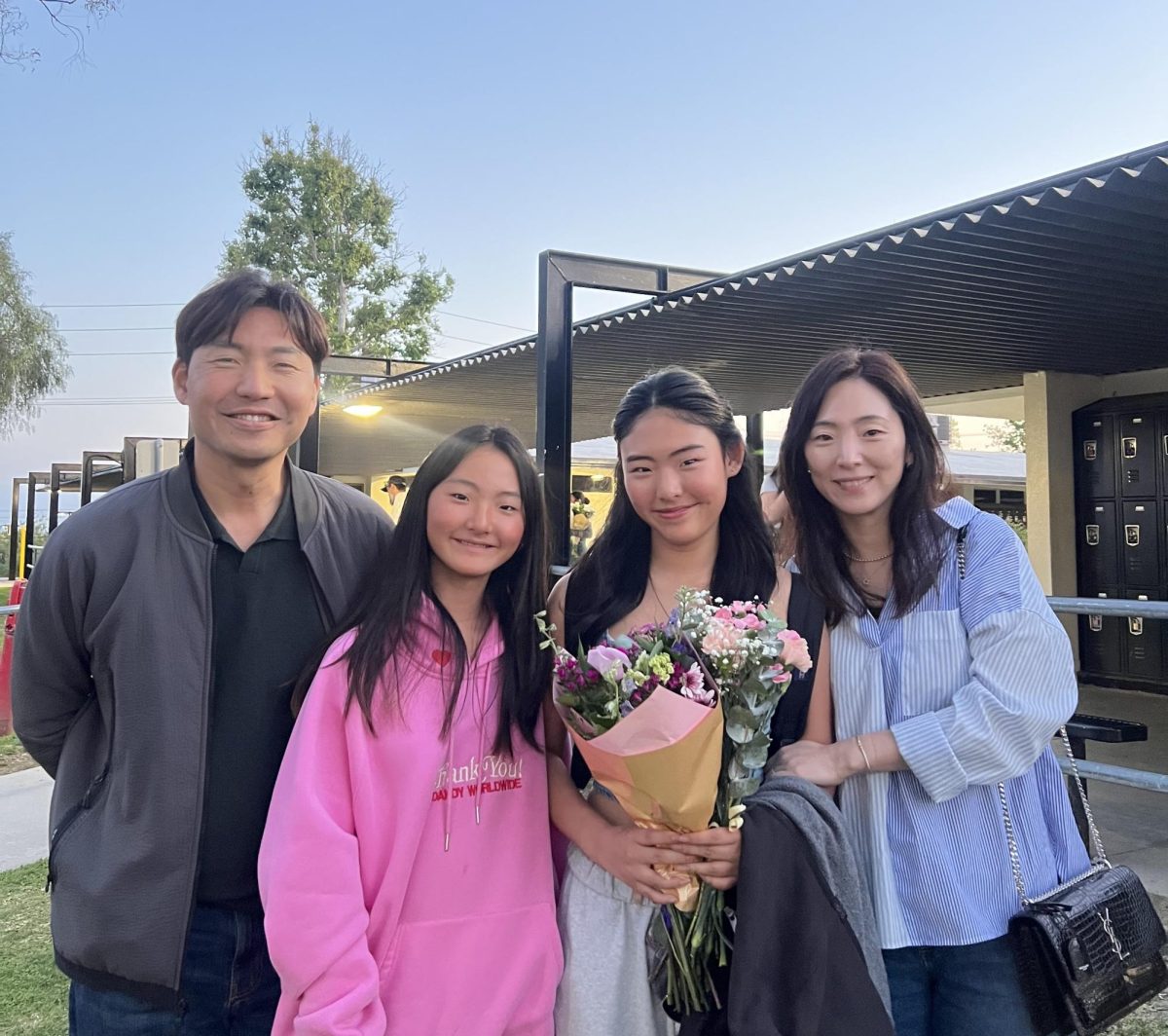
HEAD TO HEAD: Should SH continue guest speakers to inspire the student body?

When I first heard about September’s motivational speaker assembly in a conversation during my fourth period Advanced Journalism class, not only was I hesitant about its effectiveness, but I felt skeptical.
Yes, such talks are inspirational but what can they really do for a group of 14-18-year-olds focused on their personal goals for their high school lives?
I stepped into the Sunny Hills gym on Tuesday, Sept. 10, full of pessimism and an urge to just make it to break time.
However, as I sat in the third row of the bleachers during the second of the double second period assembly, I started listening to guest speaker Keith Hawkins. He stood on a low, makeshift platform set up in the center of the gym, and I started to feel my negativity transform into admiration.
“So today, I am not good,” Hawkins said. “I am better than good.”
My urge to “check out” mentally turned into a longing to hear more of what Hawkins had to say.
Captivated by his positive mindset and message to challenge our attitude to become better beings, I walked out encouraged and with an “I can” attitude.
Touched by the experience Hawkins’ speech gifted me, I believe Sunny Hills should invite motivational speakers to visit our campus every school year so current and future students can also receive such inspiration.
I will admit some students were on their phones and didn’t pay attention. However, from my point of view, many students were productively receiving input and listening to Hawkins’ words.
However, the problem of inattention is inevitable, as I noticed many use their phones during traditional assemblies as well.
According to an article by High Performance Development, motivational speakers allow listeners to upgrade their outlook on life, better their mental health and discover new and different perspectives.
I can confidently say I experienced all these positives during Hawkins’ session, as I received a new perspective on life and tried to exhibit gratitude more often on a continued daily basis. Getting motivation from listening to others’ life stories, which can help develop skills of empathy, is important for students.
During the assembly, Hawkins discussed topics like gratitude and having a positive mindset. Out of everything he spoke about, his emphasis on making the best out of any situation and seeing the good in humans resonated with me.
The jar trick Hawkins performed was the most memorable part of his assembly. While pouring out water, which symbolized people’s dreams, hopes, futures and more, Hawkins suggested that although many lose hope and forget about the positives, the “good” in humans never runs out.
As a student, I found myself in situations in which I doubted myself and others; in addition, I always caught myself complaining – griping about schoolwork, my life and anything else of importance to a 16-year-old.
After hearing about Hawkins’ life and his eloquent speech, I felt inspired to change my mindset especially because his messages came from experience.
He lived through tough times and now speaks upon them so we can learn and reflect on ourselves and our situations.
Although some may say these inspirational speakers waste class time and energy that can be used to better our already existing assemblies, I believe that through bringing in more speakers, SH students will be able to learn valuable life lessons that aren’t taught in our everyday mathematics or English classes.
Furthermore, it can’t be said that our usual assemblies are an effective use of student time either.
Our seasonal assemblies, though they may be fun, bring no educational value to our student body. If motivational speakers are a waste of time, our normal, fun assemblies are logically an even less productive use of time for students.
Therefore, motivational speakers are an extremely effective and essential addition to our campus, and it should be included as a Lancer tradition that takes place every four years to improve the school’s culture and to provide a positive climate for everyone on campus.
To provide costs for such events, SH administration and the Associated Student Body [ASB] could consider reducing spending on traditional assemblies so we can possibly save costs to invite more motivational speakers.
Listening to such speakers proves to have even more benefits, as studies have shown that motivational speeches can boost academic performance. According to a 2015 study by the Journal of Student Research, students who listened to motivational media exhibited increased grit and persistence in their academic work, leading to improved performance.
After listening to Hawkins, I found myself more inclined to think positively, impacting my mindset regarding school and my outside activities. For example, on days I feel unmotivated to work on assignments, I tell myself to be grateful that I even get the opportunity to have an education. As a result, I found myself to be more productive and driven.
Inviting motivational speakers to Sunny Hills every 3-4 years, so some students will have never experienced such assemblies, and will benefit the student body overall — spending an hour listening to inspiring individuals will not decrease students’ academic outcomes.
Hawkins emphasized living every day “better than good,” asking our student body to be thankful for everything they own and to make the best out of their situation. Inviting speakers who touch upon similar topics, including thankfulness, grit and passion, will aid in improving students’ morale.
Hawkins inspired me to live my life not just as “good.”
Thanks to SH administrators and the ASB who organized this new event, I will try to live every day “better than good,” like Hawkins urged me to. Furthermore, I will look forward to more opportunities like this to gain worldly knowledge throughout my remaining time in high school.

Insignificant.
That is the single word I would use to describe the assembly back in September with motivational speaker Keith Hawkins.
Let me step back a bit before I dive into why Hawkins’ visit became a nothing burger to me.
I don’t clearly remember all of his lessons because my mind hazed midway. Still, I do recall a major theme he covered near the end of the assembly: he poured water out of a jug that I interpreted to represent the different aspects of life, and the water never ran out, demonstrating that everyone can continue to pursue their dreams even when they think nothing is left.
The creative approach to illustrate the theme intrigued everyone in the room; all eyes followed the jug, and it left the students wondering whether Hawkins was a secret magician.
His method of expression touched a lot of people and some students possibly walked out of that assembly with a positive mindset at that moment. However, as days passed, the memory of the speech faded, and the brain reset.
Despite the positives, the event itself was pointless.
While I sat on the bleachers for the second assembly, I saw all around me a quarter of the several hundred students using their phones and playing video games, such as Brawl Stars or Roblox. Many failed to heed Hawkins’ plea to motivate the students to stay off their electronic devices.
INFOGRAPHIC CUTLINE: The slider above shows the contrasting opinions and reactions to Keith Hawkins’ speech and the assembly. (Compiled by Soojin Cho; left photo by Soojin Cho; right photo by Nicole Park)
This should’ve been expected, so the school probably should have encouraged the students to pay more attention to the speaker. If more people focused during the assembly, then maybe it could’ve been more impactful.
I’ve found value in our traditional assemblies as they piqued my interest. I could root for my friends in sports, cheer on anyone I knew from Dance Production or laugh along with those participating in games like the student surfing race.
But a 50-minute long speech is a different story as they feel more like another class with a nearly hour-long lecture rather than a fun assembly to enjoy.
ASB adviser David Fenstermaker came to The Accolade several days before and said Hawkins was invited to speak to the whole campus after he made an impression on incoming freshmen during the Summer Bridge program, a new event that district officials had administrators set up to help ease ninth-graders’ transition into high school.
Instead of spending money on an assembly that would seem like another academic class to the students, the school should add another assembly for the holidays such as during Halloween or before Thanksgiving break for more school spirit.
When I took Advanced Placement Psychology last year, my teacher introduced my classmates and I to the concept of intrinsic and extrinsic motivation. Hawkins’ appearance would be considered the former because only the people truly interested in his speech would listen.
Although intrinsic motivation is stronger than extrinsic, the reason it remained ineffective in this case is because of the optimal arousal theory, which states that humans need the right amount of arousal to become motivated. Students have to find the information interesting to listen to, but most remain bored.
In addition, according to an April 2017 online post from Psychology Today, motivation is in “flux” as “solutions will change based on the person and problem.” This means only the people who are motivated and ready to listen will be willing to change the problem, but a majority of the students at our school were not.
Especially in this generation in which Gen Zers prefer to constantly scroll through TikTok for 30-second video clips, and nearly hour-long speeches, and the review of lengthy writing considered “too serious” would definitely make it difficult to influence teenagers.
I don’t mean to give the impression that Hawkins is a hack. I’m sure that if he can at least motivate a few to make a change, it’s better than no one doing it at all.
However, his speeches would be most effective in smaller classes for those changes. For example, he can take time out of one or two classes rather than the entire student body to give his speech, just like he did during the Summer Bridge program.
But look around. Most of the students haven’t changed; the positive mindset to not give up and make the best out of everything shared in the assembly for listeners to implement during their daily lives is rarely found on our campus.
Instead, I see the same people, saying the same words and acting the same way as before.
At the end of the day, I personally believe assemblies should foster school spirit and student body engagement instead of passively learning from a guest speaker.
I’m sure each student has a different reaction to Hawkins’ visit. For those like me who are more academic-minded (taking three or four Advanced Placement classes in a junior year), I recall my talking to my peers and deciding it would be nice to be more optimistic about our school work as pessimism only leads to more stress and anxiety.
However, within a few days, that positivity died down; we – me, especially – forgot about the motivational speaker, and the monsters of negativity emerged again.
Perhaps a motivational speaker was more effective in the past before smartphones took over the lives of teenagers.
The last time anyone who fit that billing came to Sunny Hills was on Sep. 25, 2002, when Mothers Against Drunk Driving technician Matthew Sullivan came to deliver a speech about learning one’s identity and the strength to make good decisions. The first iPhone eventually hit the market in 2007.
Time is like gold for students, and every second counts.
With the shortened periods so we can make room for a double second-period assembly to hear a speech practically no one listened to, we should use that time more meaningfully.
Sadly, Hawkins was no magician for Sunny Hills. He’s most effective in smaller groups, so let’s keep it that way.
Your donation will support the student journalists of Sunny Hills High School. Your contribution will allow us to purchase equipment and cover our annual website hosting costs.








Celerina Lee • Nov 16, 2024 at 4:00 pm
This was so motivational!
Dana Lee • Nov 15, 2024 at 1:50 pm
Wow! This was so informational.
Alice Park • Nov 15, 2024 at 11:41 am
So good!! I love the con story especially 🙂
Chloe Aeum • Nov 15, 2024 at 12:13 am
Wow! Two very interesting perspectives🤔
Rhea Ji • Nov 14, 2024 at 9:31 pm
Amazing article🙌